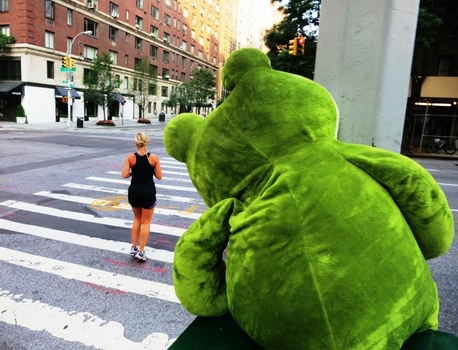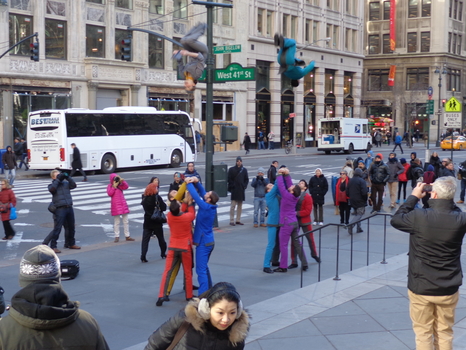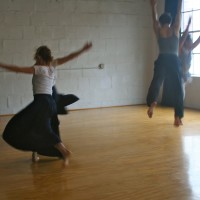One of the principle challenges the public has in appreciating modern dance is fundamental to our notion of movement. Typically, when we consider movement, we have in mind the primordial sense to obtain or evade. Movement is associated with a goal or an object, a predator or a prey. In this, the access and motive of movement resides outside oneself.
Although these directives are used in dance, modern dance is concentrated more upon the movement itself and this movement begins and ends from within. Success is not in the hunt or the escape; success is motion. In this, life is unified. Intent, exertion and achievement are simultaneous. Dancers do not obtain something without; they draw everything within. And what dancers share with the audience through this all-encompassing reality is nothing less than breathtaking.
On Monday, AANY had the opportunity to attend a rehearsal for a new dance by Karesia Batan, Currents. Karesia has been practicing Aikido for two decades and brings elements of the martial arts into her dance. This isn’t unique to her. A number of choreographers are influenced by the dynamics of Eastern disciplines. What distinguishes Karesia’s work is the emphasis. She is not working to achieve ferocious expressions through the illustration of combat. Rather, she is drawing from aspects of the central philosophy.
Centered within Aikido is the timeless awareness of “Ki” or “Chi”: the essential energy of the universe. Instead of concentrating upon the martial aspects of Aikido, Karesia concentrates upon the harmonization of the dancers with themselves and one another. This is accomplished through the rigorous practice of the Aikido technique, as well as the equally rigorous discipline of dance.
Currents moves with gorgeous ensembles. The spins and counter spins send the mind wheeling. The dancers soar with a profound tranquility, emphasizing the effortlessness of harmony to imply that the turbulence of our lives arises from our artificial struggles. Through these exquisite dynamics, there is the motif of the centered breath at the balancing point of the body. The audience witnesses the dancers finding themselves from within, not from a distinction of individuality, but through an acceptance of the portion of the whole of which they are composed.
From the centering of the mind and body through this concentrated awareness, the dancers broaden themselves into the environment in which they live and perform and, most importantly, of which they exist. This results in movements ranging from the synchronous to the rhythmically cascading. The audience can literally witness the movement of chi passing from one dancer to the next as waves upon the ocean passing through the medium of their lives, and the alternating dips and crests culminate into massive tidal sways that draw a sense of the celestial.
Admittedly, my illustrative descriptions are diminishing. The dancers are not attempting to represent. This is not pantomime. The “currents” of the title can indentify a flow as much as the timeless presence of the immediate moment. Yet, still, the dancers are portraying more than just themselves. They are demonstrating how our lives and bodies are a manifestation of the quintessential energy that is shared. And in Currents, Karesia and the performers awaken the awareness of the essential dancer within us all.
Karesia’s piece, Currents, and her duet, Torque, will be performed with three dances by Craig Hoke Zarah: Uprising, Venusian/Earthchain and Remaining Virginal and two dances by Frances Rosario-Puleo: Heliodor and Bubble at the Gibney Dance Center May 3, 7:30 PM.
Garrett Buhl Robinson is a poet and novelist living in New York City. www.garrettrobinson.us












Alex from NWU
Perceptive review, Enjoyed your definition of modern dance. Look forward to reading more reviews.